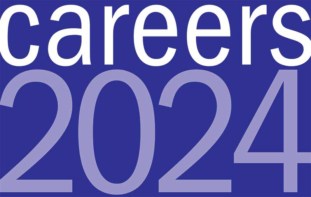
Physics World Careers
Providing valuable careers advice and a comprehensive employer directory
Thank you for registering with Physics World
If you'd like to change your details at any time, please visit My account
XPS is used to determine the atoms present at a surface and their concentrations, chemistry, and lateral and depth distributions. This course emphasizes:
• Introduction – terminology, surfaces, types of surfaces.
• The principles of XPS – production of photoelectrons, peak labelling, electronic configuration of atoms, binding energies of atoms, molecules and solids, kinetic energy, spectra, Auger process, valence spectra, handbooks, books, surface sensitivity, inelastic mean free path and databases, information depth, hard X-rays (HAXPES), sample handling, spin-orbit splitting, chemical shift, curve fitting using software, plasmons, multiplet splitting, shake-up, data processing to measure intensities of p, d and f spin-orbit doublets.
• Instrumentation – dual anode, Bremsstrahlung, satellites and their removal using software, monochromatic source, electron energy analysers, spectrum acquisition, energy resolution, scattering in analysers, electron detectors, pulse counting, position sensitive detectors, small area analysis, area location, imaging XPS, methods for imaging, equipment and examples, software to improve information in images, vacuum system, samples, energy scale calibration.
• Qualitative analysis – identification of elements including examples using software, changing X-ray sources, charging and its effect on qualitative analysis, interpretation of chemical shift, relaxation effects, Auger parameter, making Auger parameter plots online, factors affecting peak widths, lineshapes, curve fitting with different lineshapes, advanced curve fitting using reference spectra.
• Quantitative analysis – sensitivity factors, ionization cross section, asymmetry parameter, magic angle, analyser transmission, reference spectra, peak intensities, background subtraction with examples using software, measuring peak areas, using software for quantitative analysis, detection limit with examples, band offsets, studying curved surfaces.
• Artefacts – X-ray damage, charging and software approaches to improve quantitative analysis of data, methods for charge control, ghost peaks.
• Depth profiling – non-destructive and destructive methods, angle resolved XPS with examples using software, diffraction, elastic scattering, thickogram, inelastic loss method with examples using software, effect of thin overlayers on quantitative analysis, sputtering, depth calibration, examples of data processing methods to remove peak overlap problems, separate different chemical states, and improve signal-to-noise in sputter depth profiles.
• Instrument selection and summary – factors to consider, general summary.
You can gain extra visibility for your meeting or conference by adding it to the Physics World events calendar.
We accept any event that is relevant to the scientific community, and all events will be moderated prior to publication.
Add your event